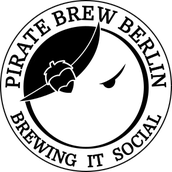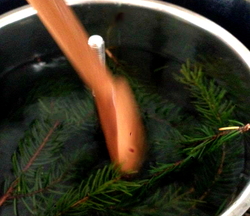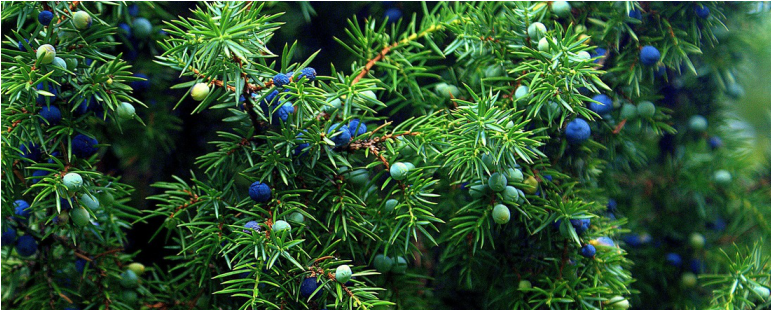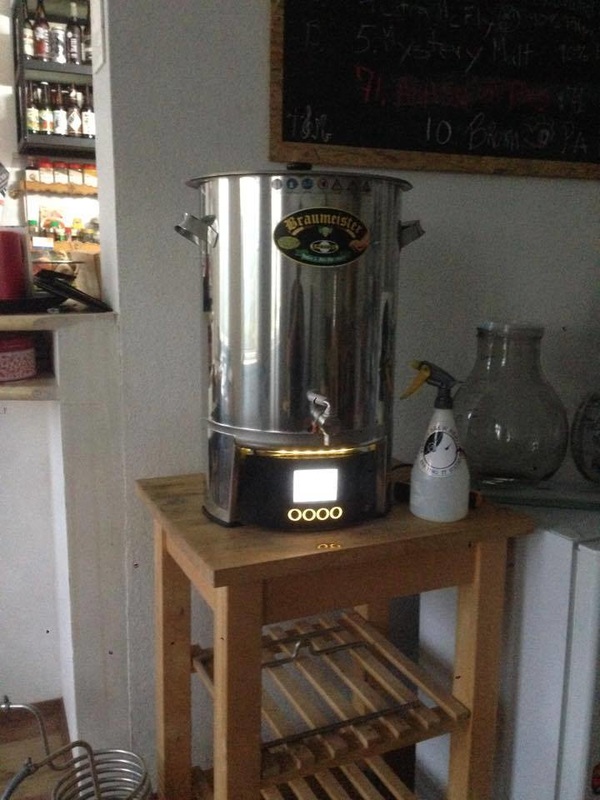Breaking tradition with a traditional raw aleRaw ale is beer brewed without boiling. This particular style of brewing, for me, is one of the most intriguing. It's quite possibly one of the oldest ways humans brewed beer. The technology to get something boiling is much more complex than simply maintaining high temperature, as would be necessary for the mashing process. As with most things in archaeology, though, this is tough to prove. Beer for me is defined as an alcoholic beverage whose sugars are derived from cereals. Given the adaptability of wheat, barley, rye, and oats to cold/wet climates, these grains became the dominant brewing materials. As a result, western society has, over time, come to define beer as an alcoholic beverage made from mainly malted barley, water, hops, and yeast, with the brewing process as mash, boil, and fermentation. Turning to history, one quickly finds that this idea is only a modern one. Raw ale is a perfect example as to why current brewing dogma needs more historical inspirations. HistoryRaw ale is part of the larger Northern European ‘farmhouse ale’ family. Efforts to preserve such traditional brewing started around the 18th century, but more concrete research began with John Granlund's survey of Nordic brewing in 1928 (Revised with corrections, thanks to Lars Garshol). My entry into Nordic brewing history stems from Odd Nordland’s Brewing and Beer Traditions in Norway, published in 1969. It was based on a census in Norway in the 1950s, asking questions about the brewing process. I haven’t had the chance to read Nordland’s work, but it has been cited plenty by archaeologists (leading to my frustration with its unavailability). Thankfully, Lars Garshol has explored Odd’s work, and researched into the style extensively. Coincidentally, he has recently published a book on the topic. It was his prolific exploration of farmhouse breweries, and the discovery of these different styles that inspired me to brew a raw ale. Set Up One problem, I don’t have a homebrew setup in Berlin (the joys of moving countries). So, I got together with the awesome folks over at Pirate Brewing who were kind enough to let me throw Brettanomyces into their fermenters. The two-person team used to run homebrewing parties out in Spain and have recently gone pro out here in Berlin. They also have a killer brew set up at home. Gammel Bonde Recipe design based on the research carried out by Lars Garshol Smell - Ripe banana, with a hint of pine. Don't smell any DMS, nor any hint of sourness. Appearance - Two to three fingers thick fluffy white head, with some haziness. I didn’t expect the beer to be as clear as it was. Given the increase of proteins and unfermentable sugars, I anticipated full on haze. Taste - Banana meringue or banana flavored whipped cream with a dry finish. Going into this brew session blind, I couldn’t be happier with how this turned out. I expected a 100% malt bomb, but we got something similar to a dry hefeweizen. Neither cloying nor lingering flavor. Mouthfeel - Full bodied, but over carbonated. These immediately foamed once you opened a bottle. Final Thoughts: I am seriously surprised by this beer. I anticipated a DMS-filled malt wreck, but it was a well balanced and easy drinking. Plus, it was one of the easier brew days I’ve had, so that makes it even more appealing. According to Lars, the beers go bad quicker than normal beers. But for the sake of experimentation, we’ll keep a bottle or two to see what happens. There are Lacto- and Brett in the bottles, so perhaps something good will happen. Changes: More branches. I didn't detect too much juniper/pine flavor, and it would have played nicely with the strong banana flavor. Also, it would be interesting to play with the malt bill. I’d like to see how oats or rye would play into a beer like this. Recipe
3 Comments
|
Jordan RexBeer archaeologist Archives
November 2017
Categories
All
|


 RSS Feed
RSS Feed
